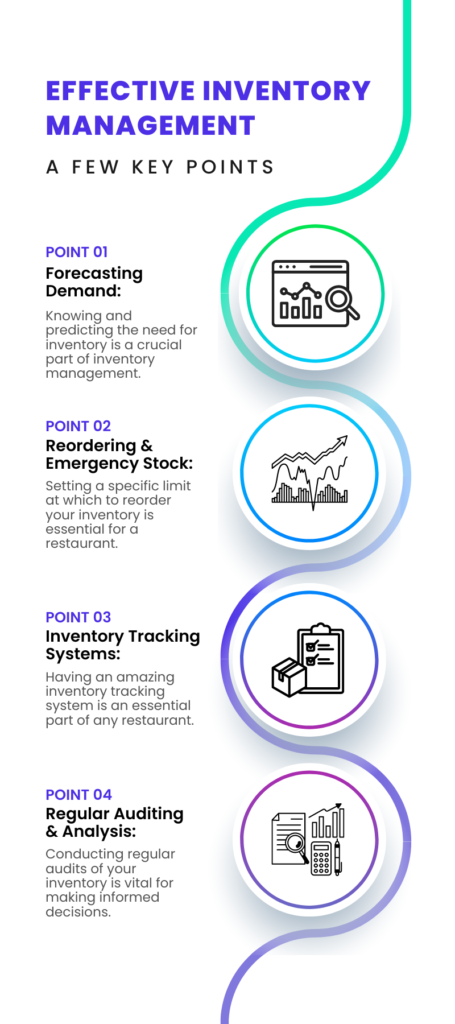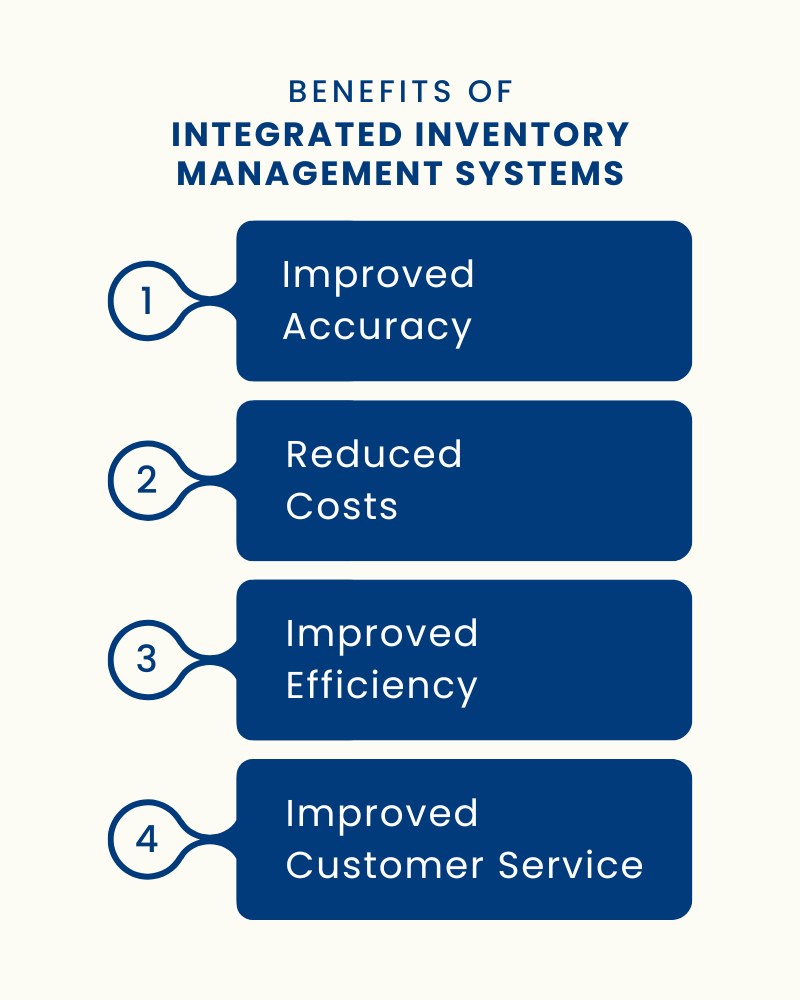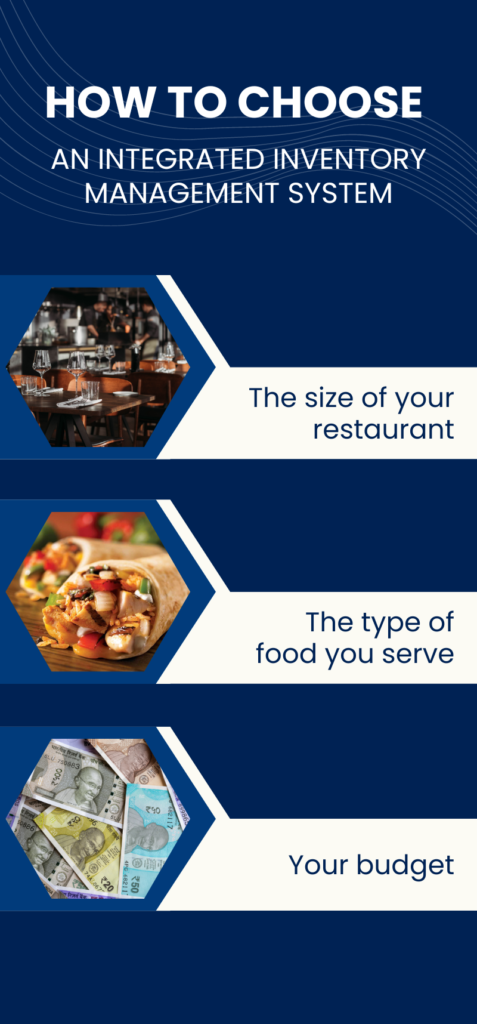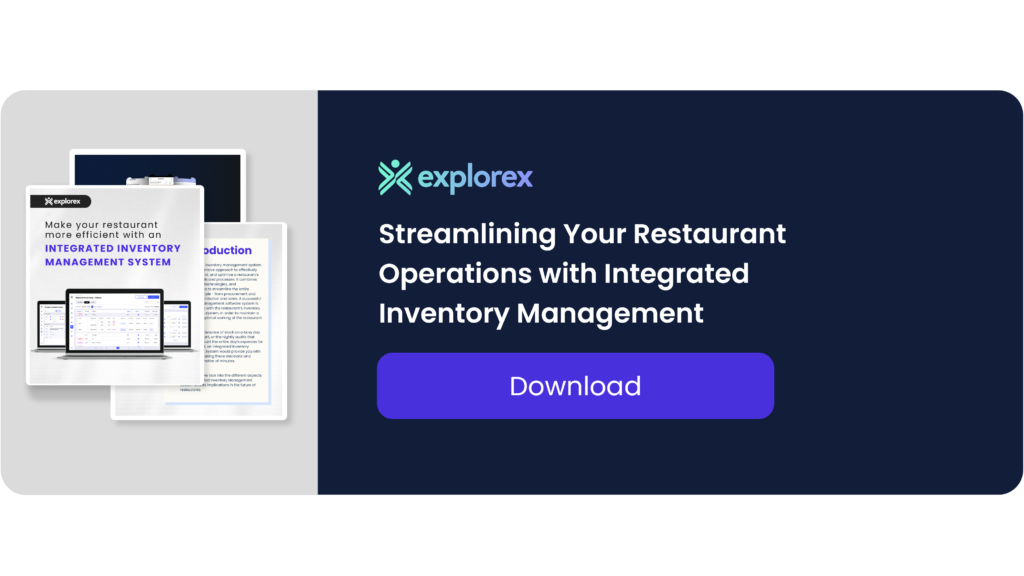A successful restaurant has many goals it needs to meet, from excellent customer service to great food quality, in order to retain customers and have a routine flow of patrons enthused by the appeal of the restaurant. One of the factors that has a critical effect on the restaurant’s efficiency is inventory management. A well-implemented inventory management system can help you streamline processes, decrease expenses, and improve your customer service. In this blog post, we will explore the nuances of inventory management, benefits of integrated inventory management systems and provide insights on how to choose the right system for you.
Inventory Management
Inventory management is the process of overseeing and controlling the inventory of a restaurant to ensure necessary stock levels, efficient operations, and cost-effectiveness. It involves managing and acquiring, storing, and distributing of goods that a restaurant needs in its everyday operations.
Effective inventory management is essential for businesses as it impacts their profitability, customer satisfaction, and efficiency. Here are a few things to consider when we talk about an effective inventory management system:
- Forecasting Demand: Knowing and predicting the need for inventory is a crucial part of inventory management. By analyzing their everyday demand, market changes, and customer behaviour, restaurants can estimate the future demand for their products and thus adjust their inventory of goods accordingly.
- Reordering and Emergency Stock: Setting a specific limit at which to reorder your inventory is essential for a restaurant. It ensures that the restaurant doesn’t run out of stock or see their stocks being wasted and thus causing financial strain. Emergency stock is additional inventory maintained in order to tackle sudden increase in demand for a specific item and to manage delays caused while delivery of the stock.
- Inventory Tracking Systems: Having an amazing inventory tracking system is an essential part of any restaurant. Along with maintaining stock of their inventory, the tracking system also needs to guide you on the requirements when your stocks dwindle, provide you with your purchase orders and vendor connections, and with the overall reports and analytics of your inventory in one place. An ideal system would be part of a larger ecosystem that aids in your restaurant management.
- Regular Auditing and Analysis: Conducting regular audits of your inventory, analyzing sales patterns, monitoring customer preferences, and identifying slow-moving or obsolete items are vital for making informed decisions. This analysis helps optimize inventory levels, reduce costs, and identify opportunities for improvement.
Benefits of Integrated Inventory Management Systems
Before we get into the benefits of an integrated inventory management, we need to understand what makes the system integrated. The integration process involves the overall coordination between the POS system of the restaurant, the order fulfilment process on the floor and the backend accounting of the restaurant. This overall ecosystem would enable the restaurant to work efficiently and effectively, curating the restaurant processes into one conducive ecosystem. The integration of your inventory management system into your restaurant services has several advantages and benefits.
Improved Accuracy
An accurate inventory management is crucial for any restaurant, irrespective of any size. With an integrated inventory management system, tracking of stock levels happens in real-time, ensuring that you always be prepared for every item and keeps your restaurant running all the while. These systems often incorporate an automated data entry, reducing the chance of human error. With accurate inventory data, you can avoid overstocking or running out of essential items, leading to smoother operations and improved efficiency in your restaurant.
Reduced Costs
An effective inventory management can have a momentous impact on your restaurant’s costs. Integrated systems help you monitor inventory levels and track patterns of usage, enabling you to make informed purchasing decisions. By identifying order trends and optimizing your inventory ordering process, minimize food wastage, prevent excessive stockpiling, and negotiate better deals with your vendors and suppliers. These measures contribute to increased profitability and sustainability in the long run and increase the overall revenue of your restaurant.
Improved Efficiency
Manual inventory management processes are time-consuming and prone to human errors. Integrated inventory management systems will automate various tasks, such as generating purchase orders, tracking deliveries, and updating stock levels. Integrated systems negate the need for manual data entry and streamline purchase orders. These systems reduce the need for human resources and free up your staff for other value-added jobs that provide your customers with exceptional dining experience and customer service. This higher efficiency creates a suitable work experience for your employees and thus provides your restaurant with higher productivity.
Improved Customer Service
An integrated inventory management system helps you meet your customers’ demands. An integrated system helps you anticipate stock levels and meet your customer demands. This allows you to proactively manage inventory, ensuring that popular menu items are always ready to be cooked. By constantly meeting your customer’s expectations and enhancing their dining experience, foster loyalty and generate a positive customer reaction towards your restaurant.
How to Choose an Integrated Inventory Management System
The size of your restaurant:
When selecting an integrated inventory management system for your restaurant, the size of your restaurant often comes into question. People might defer to a simple cloud-based system to cater to their inventory needs when it comes to a smaller establishment. This limits the restaurant’s ability to grow and create an efficient business. Larger restaurants look for a more robust inventory system that can handle the load and level of stocks needed for the space. While this is good to handle every day needs and stocks of the restaurant, it may not always be integrated into your restaurant management software. Thus, choosing an ideal integrated inventory management system takes much more diligence than the size of the restaurant.
The type of food you serve:
Restaurants often face the issue of procuring a varied inventory from different vendors. For instance, a fine dining establishment that has its vendors from several locations, including seasonal ingredients and fine wine, may prioritize features like recipe costing and menu management. On the other hand, a fast-food restaurant with a vast array of ingredients, may require a complex supply chain management system, inventory tracking and hence a robust system to maintain stocks at all hours. Hence, it is necessary to find both the requirements in one integrated inventory system.
Your budget:
Investing in an integrated inventory system may require budgeting of your resources but is a cost-effective long-term necessity for your restaurant. Since a restaurant has several licensing fees, stock management and every day costs, investing in a separate inventory management system can be a hassle. Thus, an integrated inventory management system, provided along with your POS system, Web App, and your payments solution helps you cut costs and provide your restaurant with an effective inventory management system.
Conclusion
An efficient inventory management is a critical component of running a successful business and in this case a successful restaurant. An integrated inventory management system offers numerous benefits, including accurate analysis and anticipation of stocks, reduced restaurant costs, increased efficiency, and thus an enhanced customer service. By choosing the right system, you can optimize your inventory processes and streamline your operations to suit your positive needs. Thus, by embracing the power of technology and effective resources at your disposal, you can achieve the efficiency otherwise unparalleled by normal inventory systems.





Leave a Reply